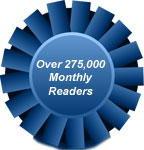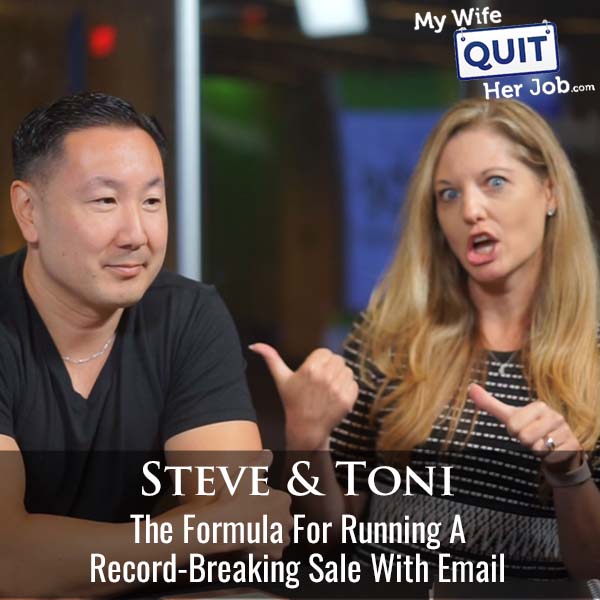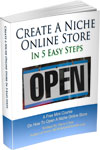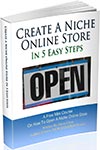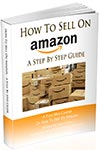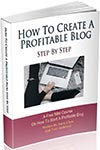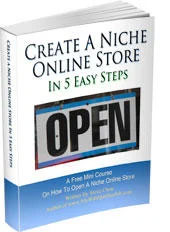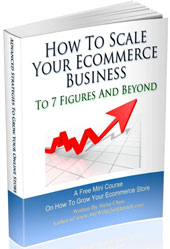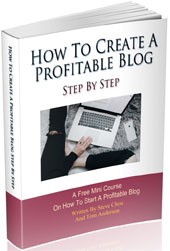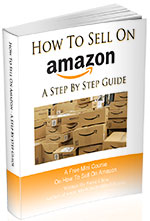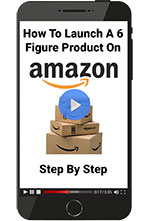Podcast: Download (Duration: 49:57 — 57.4MB)
In this episode, Toni and I discuss the right way to run an email sale campaign based on one of her largest clients.
I learned a lot from this episode, and I’m positive that you will too.
Get My Free Mini Course On How To Start A Successful Ecommerce Store
If you are interested in starting an ecommerce business, I put together a comprehensive package of resources that will help you launch your own online store from complete scratch. Be sure to grab it before you leave!
What You’ll Learn
- How to run an email sale campaign
- An inside look at how an ecommerce company organizes email subscribers
- The principles for getting someone to buy from email
Sponsors
SellersSummit.com – The Sellers Summit is the ecommerce conference that I’ve run for the past 8 years. It’s small and intimate and you’ll learn a ton! Click Here To Grab The Recordings.
The Family First Entrepreneur – Purchase my Wall Street Journal Bestselling book and receive $690 in free bonuses! Click here to redeem the bonuses
Transcript
You’re listening to the My Wife Could Her Job podcast, the place where I cover the latest strategies to grow an online business. And today, Tony and I discussed the right way to run an email sale campaign based on one of her largest clients. I learned a lot from this episode and I’m positive you will too. But before we begin, if you haven’t picked up my Wall Street Journal bestselling book, The Family First Entrepreneur Yet, it’s on sale on Amazon at 38 % off right now. My book will teach you how to achieve financial freedom by starting a business that doesn’t require you to work yourself to death.
00:29
Plus you can still grab my free bonus workshop on how to sell print on demand and how to make passive income with blogging, YouTube and podcasting when you grab the book over at mywifequitterjob.com slash book. So go over to mywifequitterjob.com slash book, fill out the form and I’ll send you the bonuses right away. Now onto the show.
00:52
Welcome to the My Wife Quitter Job podcast. Today, what we’re going to do is we’re going to break down an email campaign for the largest sale of the year from one of Tony’s clients, kind of like an inside look at how an e-commerce company is run. That’s right. And we talk a lot about how we don’t like to promote sales and discounts. And that’s usually our crux, right? Like, don’t discount, don’t put stuff on sale. And we teach a lot of strategies about
01:21
how to do that, how to convince people to buy without sales. But sometimes you’re gonna run a sale, right? Whether it’s Black Friday, the holiday time, you you’re in the linen business, so your sale time might be, you know, spring for weddings, things like that. There’s gonna be times of the year where people do have sales and discounts, so I thought it’d be fun today to walk through the email strategy for my clients, basically her biggest sale of the year. When you say biggest sale, like what percentages are we talking about here?
01:49
Uh, so it’s not, okay. So biggest sale meaning discount it’s 25 % off the whole store. So no exclusions. And it’s also her highest generating like revenue wise. So this will be her July is always her biggest month of the year. She sells curriculum. So obviously people are purchasing curriculum before the school year. So this is the biggest sale as far as discounting. has, she, every once in a we run a little bit better discount, like overall site-wide, this is definitely the best.
02:17
And it’s also long. It’s like an 11 day sale. Wow. That’s a lot of emails. I can’t wait to hear about it. That is a lot of emails. I’m afraid to is no joke. That’s a pretty big discount. It is. And I think it’s hard right now, right? Because I’ve been on TikTok a lot. As you can see from my background, I’m staying in an Airbnb. And when there’s no Copa on, I’m on TikTok a lot more often at night.
02:46
And like everything, seems like it’s discounted on TikTok, right? Like everything’s like 40 % off, like these crazy levels of discounts. So it’s almost like 25 % doesn’t seem that great anymore, but it really is a powerful discount, especially if you’re not discounting throughout the year. I think you guys only ever do like 10 or 15, right? We only do 10, at most 15. Actually, I just wanna talk about this real quick. So that implies that this store’s margins are really good.
03:14
Right? Because most stores can’t pull off a 25 % sale unless they sell like triple the merchandise or something like that. Correct. Yes. Margins are very high. Paper products tend to have really good margins in general, I think. So yeah, it definitely can, it’s affordable and still profitable at that discount. And that’s actually a good point that you brought up. You should never run a sale.
03:37
especially an 11 day sale that you’re not going to be profitable with, right? Like you, it’s one thing to run a one or two day promo to get like new customers or things like that, but you can’t do something like this unless you know your margins can sustain that kind of a discount. Yeah. The only reason I bring this up is, uh, there was one time, uh, one of my acquaintances ran a, one of those lightning sales on Amazon and gave out discounts, but I mean, his margins were only like 30 something 33, 35.
04:07
So it felt good, like he got a lot of revenue, but at the end of the day, what was he netting? Three to 5%, something like that. Yeah. And also the only benefit to doing that on Amazon, so this is fully a Shopify store. There’s no Amazon component. But the one thing on Amazon that it might make sense for is that if it does allow you to climb up those bestseller ranks and gets you a ranking. I mean, I had to do that years ago on Amazon.
04:32
where I had to drop my price to get the buy box back. And what it ended up doing is shooting me into the best seller category, which then, you know, I could update the pricing and still, and you know, did really well, but that’s definitely not, you can’t use that as like a business strategy overall. It’s a lucky break or a one time sort of thing. So for the Shopify store though, it really is just a pure revenue play, right? There’s no, I mean, it won’t affect rankings or anything like that. Pure revenue play and also,
05:01
play to gain new customers through advertising. Now, obviously, I don’t work on the advertising side, but the ad spend is pretty high during the sale, getting close to five figures a day. Okay. Okay. Cool. So we’re going to talk about email. And obviously, email and ads work together, right? Because if we do get someone through a sale, through an ad, basically cold, right? They’ve never heard of the store. They don’t know anything about us.
05:26
you know, this email sequence after they make the purchase or if they abandon their cart, those are obviously very important as well. And so when you’re doing something like this, if you’re doing your big one-time sale, you know, blowout, you want to make sure that those emails that are set to capture those lost customers or the new customers are really tweaked, right? Go through and make sure the images are updated. Make sure your links are still working. You know, every once in a while when I go through this, I always find like that link, that page doesn’t exist anymore, right?
05:53
So when you’re gonna do something big, especially like thinking even now to Black Friday, right? We’re not too far away from prepping for that sale for most people are. I know as I’m saying it, I’m like, wait, hold on a minute. It’s 110 degrees outside. How are we talking about this? But yeah, going through and making sure some of those email flows that you have set up, because you know what happens, right? You set those up and you forget about them and they earn you money and it’s great, but.
06:18
every, was just doing this yesterday, just updating images. Like we redesigned products and I still had old product images and emails. So things like that, you want to make sure you do that well before the sale kicks off. Okay. So we’ve already established the sale is pretty big. It’s 11 days. How many emails are you going to be sending? So the key, so the key to this for me personally, like when I’m setting this up for somebody, or if I were set it up for myself is segmenting.
06:49
the sends. So we’re not sending emails to every single person on the list all the time, but we are flooding people’s inboxes. And I would rather flood people’s inboxes and just get an unsubscribe as long as we’re staying within healthy margins for this, right? We don’t want our spam rate or unsubscribe rate to go through the roof. So you obviously want to monitor that. I would rather over send than undersend because as I say all the time, every email you send will make you money. So if you can
07:17
just send as much as you possibly can. We will probably send 30 some emails during these 11 days, different emails, right? To different groups of people. And honestly, I wish I could come up with more ideas. So just curious, what is the unsubscribe rate where it gets out of control for you? The unsubscribe rate gets out of control. Our unsubscribe rate is so low. Definitely like we’re usually like 0.1%.
07:45
Right? So for anything, if it fluctuates, you know, a little bit more than that, then I’m going to start paying attention. But we don’t what we have is a lower open rate was what usually happens. So our unsubscribe rate stays the same. spam rate is basically zero. And I the open rate goes from around 45 to 50 to 40, 35 to 40. OK. I am also curious why 11 days. Seems like a lot.
08:13
It does seem like a long time. That I actually don’t know. They’ve been doing this sale before I ever came on board. that’s they’ve, I think one year they decided to shorten it to nine days and they got to day nine or day eight and they realized they were really, uh, like they were missing out on thousands and thousands of dollars. And they’re like, we’re making this sale longer, right? It’s kind of like, that’s hard too, because you’re thinking to yourself, well, if 11 days works, might as well keep it at 11 days because. Well, why not 15 days?
08:41
Well, some point I get tired of writing emails, you know. Yeah, I’m not sure what the 11 days comes from, probably because it only… So her email over the weekend is always lower because people are busy, families, things like that, church. So we only want to overlap one weekend during the sale and maximize the weekdays. So like this year, the sale starts on a Monday and then ends on the following Friday. Okay.
09:10
Before you get into the guts, can we just talk about the segments? Yes. So the biggest segments that I have for this sale, and we do lots of little segments like purchased this type of product, because she has like two or three product categories. So purchased this type of product, but didn’t purchase a different type of product, right? So you purchased a Bible study, but not curriculum, or you purchased a
09:33
cards, but not a Bible study. So we divide people up like that. But the biggest thing that I like to divide people up is they’ve made a purchase or they haven’t made a purchase. So that’s the first two buckets, right? Because that’s obviously important. We have a lot of people on the list who’ve never made a purchase. They’ve come in through a lead magnet or maybe an abandoned cart, and we just haven’t gotten them to convert. So that’s number one. Then we have, haven’t made a purchase in X amount of days.
10:00
Yep. So if they haven’t made a purchase in like 90 days or 180 days, because it’s curriculum, you’re not going to be buying it. You know, it’s not a replenishable every four weeks type of item, but we do see people coming back about 270 days is like the repeat customer rate. And so if we know someone bought last year around this time, they’re probably going to buy again, right? Because they either need a new curriculum product or they’ve used up what they purchased because almost everything we do sell is consumable. just has a longer life. Okay.
10:29
Let’s just talk about those two segments, purchase versus non-purchase. It seems like the people who have purchased already, you wouldn’t need to give them a 25 % discount, right? You would think. But I’m curious how the messaging is different in those emails that you send to both. So yes, so the messaging is actually, and then this is the one more segment that I actually think is really important, is then I divide up the purchasers between, so we have a rewards program.
10:57
So people that have over 500 rewards points get talked differently than people who have under 500 rewards points. And 500 is sort of the cutoff, not the cutoff, but like that’s the tipping point for like, okay, you’re a bigger spender and you’re also probably hoarding your points for something, right? Like you wanna.
11:15
you’re kind of holding, because there’s people like, I’m like that type of person. I don’t know if you shop at like Sam’s or Costco, but Sam’s does like the cash back or whatever. So like every time I’m in Sam’s club, the next time I’m always there like, do you want to apply this to your purchase? I’m like, yes, I do. You know, even if it’s like $3 and 24 cents, I’m pushing that to my next purchase. So, you know, there’s people that like get the rewards points and you can cash them in as soon as they can. And then there’s people that hold on to them and want the sale, right? They’re waiting for that sale.
11:42
to spend and cash in their points. Because they’re probably placing like a hundred dollar order or something like that. So those are the people that I actually talk very differently to because they’re most likely to spend money and spend more money because they cash in their points. So it’s like free money to them, right? So it’s like they get $10 in credit, but they’re gonna now spend 75 instead of 50 because they get that feeling of free. Right. Okay.
12:11
You know what’s really funny about this is whenever I emailed to people who have not purchased, I actually usually give them a larger coupon code than the people who’ve already bought. Just because I always feel like they’re already in the bag. the discount is the same for both. Yes, it’s just yes. Well, that will get there. OK, it doesn’t always stay the same. So 25 percent is the flat rate. And the very first day of the sale, we email I email people in three groups. So it’s
12:41
people who have over 500 rewards points, people who have under 500 but have some points and then never purchased. So the over 500, you can do this all dynamically, right? If your rewards program most likely connects to your email service provider. So you can be like, hey, you have this many points, this is the time to use them. I point out the value of their points, right? So it’s like, if they weren’t thinking about the fact that, oh, cause lot of people forget that they have credit.
13:09
Right. So I make a really big deal. It’s at the top of the email, like before even the greeting, you have X points in your account. You know, it’s in the middle. It’s talking about how you can use those points. I go into more detail because these people have already shopped, right? I don’t have to really convince them about the product. I just have to convince them to spend. So those emails get the points. Those emails, the points emails get the most like, here’s how you effectively use your points. The, you know, lower tier of points.
13:38
It’s more of a focus on this is a really good deal. Like, you have some points, but hey, you’ve shopped with us before, now you can get more of what you like at a really great price. So I focus more on the value side of it. And then for the non-shoppers, I use the same value language with a lot of social proof. So we create a lot of graphics that have pictures of the products with reviews.
14:06
And, you know, it looks very, I don’t want to say professional because everything we do looks professional, but it doesn’t, you know, it just feels like a very professional looking product with the five stars and the, know, and we try to pick the absolute most compelling reviews. Like I’ll comb through 50 reviews to find what I feel like is the most like heart string tugging, you know, review that we can use for a product. And I try to use in those, in those emails to the non-shoppers.
14:35
I try to only focus on our best sellers because that’s what’s most likely to bring people in, right? So I’m not gonna talk about some obscure product that, you know, we sell a hundred of a month. I’m gonna talk about the product that we sell 5,000 of a month because that’s probably how they found us to begin with, whether it was an ad or abandoned cart or something like that. And so I focus on those types of products with the social proof added to it.
15:00
I just wanted to take a moment to tell you about a free resource that I offer on my website that you may not be aware of. If you are interested in starting your own online store, I put together a comprehensive six day mini course on how to get started in ecommerce that you should all check out. It contains both video and text based tutorials that go over the entire process of finding products to sell all the way to getting your first sales online. Now this course is free and can be obtained at mywifequitterjob.com slash free.
15:30
just sign up right there on the front page via email and I’ll send you the course right away. Once again, that’s mywifequitterjob.com slash free. Now back to the show.
15:41
Actually, that was my next question. Just to the landing pages are different for all three segments. The landing pages are the same. They’re the same. Okay. Yes. Yeah. Um, cause I don’t actually have any control over that, but that actually is a really good idea to do. But you were just talking about you, you, say you’re only talking about the best products when they click on it, it doesn’t take them to that product or it does take them. Yes. So sometimes I direct them, sometimes I take them directly to the product. Sometimes I take them directly to the sale page. It just depends on what we’re talking about.
16:11
Okay. Okay. But in the case of people who haven’t purchased and you’re talking about your best sellers, those links go directly to the best seller. they haven’t clicked on it. Yeah. I want them to go. So another tip is, uh, like we’re doing 25 % off. People cannot do math. People can’t like, you know, you’re the only one that knows how to do math in this world. I think so.
16:34
One of the things, there’s an app on Shopify, actually don’t know the name off the top of my head, but it basically shows the price and then cross out in the sale price. You can’t just say 25 % off and not show people the pricing. That’s what we to just change the pricing, right? So if it was $10 and it would be 750 and we would just put 750 on there.
16:54
Well, that doesn’t mean anything to people because they didn’t know it was $10, right? They would just do the price change. Now it’s like $10 scratched out, saved 25%, 750 or whatever. that’s actually- it the page itself or the email? Yes, no, on the page. that’s actually- All the products are slashed? Yes. And that actually increased our sales by 30 % the first time we ever did that and has stayed at that level. So that is a huge tip. If you’re not doing that,
17:23
especially if you’re like doing a percentage off, people don’t know what 25 % is. They’re sitting there trying to do the math. They get frustrated. They’re not sure. Or then they get, they did the math wrong and they’re either frustrated or more excited when they get to the cart. Um, and also we don’t do a coupon code. It’s all automatic discounts. So the disc, you know, the, because you just, get people falling off, not trying, not using the coupon code correctly. We’ve tried it both ways, not having the code and just having the discount be automatically deducted is the best option.
17:52
So regular people who come into the store do not see the slash, the slash. They everybody sees the slash. Oh, everybody sees the slash part. Everybody sees it and everybody gets the discount. There’s no code to enter. And this is especially effective with ads, right? Because then people aren’t trying to remember like some obscure eight digit thing or is that an O or a zero and all that stuff. and it also is helps with some other strategies that I’ll talk about in a minute, but that has been.
18:21
one of the biggest game changers as far as during a sale is having that price slashed out with the other price. Huge. can totally, especially something as large as 25%. That would be huge. Yeah. I remember my wife and I talked about this and we only wanted to give the sale to people on the actual list. And you are absolutely correct. A lot of people don’t type in the coupon codes. So we just made it automatically applied. But the problem with the way we do it is they don’t actually see the discount until they make checkout.
18:51
Whereas in your case, they see it right away and I can totally see how that could lead to more conversions. Yeah. So, and we’ve, we’ve tried it all the different ways with codes and check out all that thing. Um, and it just, it’s just more effective this way. Obviously, if you only want to give a specific discount to certain people, you would do a code in an email, which we actually do as well. And I’ll talk about that in a minute. Okay. So, so that’s a day one. Um, and day one is just, you know,
19:20
This is a great sale. It comes once a year. You need to buy really like a general call out, you know, not, not anything more specific to products. Now, what I, what I also do, and this is something that like, you obviously either need someone who does your email like full time, or you just need to be on it during a sale like this. But when it’s your biggest sale of the year, I feel like you should dedicate like resources to something like this. But what I do day one of the sale is I start looking at.
19:49
Like what are the best sellers right now in the sale? is causing people to convert on the site? So I’m watching the dashboard on Shopify and I noticed that we have, they have a Bible study that has some typos in it. And so they have clearance this Bible study to $2, right? Because they have to reprint it, but they don’t want to just throw them away because it’s like three typos, but like three types is a big deal, you know?
20:14
When you sell curriculum, you can’t have typos in curriculum. So, and it’s very clear on the listing that there are typos and they spell out exactly what they are and things like that. But they have thousands of these Bible studies that they’re trying to liquidate. So they’ve been at $2 for like, I don’t know, four or five months, but there’s a Christmas Bible study. So people are not really thinking about buying a Christmas Bible study right now. Well, what I noticed was on Monday, the start of the sale, people were really interested in that study because of the price point, right? $2.
20:43
So I was like, you know what, I’m going to throw together an email and send it out Monday night, like first day of the sale that night, and just say, this study is $1.50 with the discount. And I like had a graphic, big cross out 15, big red X, know, $2 plus blah, blah, blah. Because here’s what I know about people. One, well, one, we need to liquidate this. don’t really, mean, at this point we’re giving it away, right? Right. Two,
21:10
If I can get people to add something to their cart, I can get them to add more stuff to their cart. Right? Like this is just the gateway. The gateway drug is the Christmas Bible study. Sounds terrible. Um, so I created that email. I, created that and I, and I created a text only email with a, um, like, Hey, I don’t know if you saw this, but you know, Oh, this wasn’t text only. This was a big graphic with the big X and it was like, Hey, I don’t know if you saw this, but literally it’s a dollar 50. Like you’ve got to get it. We’re selling out.
21:40
blah, blah. Within three to four hours, that email had done like six grand on a $2 Bible study, right? So either you’re selling a lot of $2 studies or people are coming in and buying other things. And that’s sort of that whole like loss leader at the grocery store thing. Like why can they sell grapes for a dollar a pound? Or why do they want people to put wine in their cart? Because they know when people put wine in their cart, they put another $50 worth of random cheese and bread in their cart. So like I knew if I could get them over to the site with the $1.50,
22:09
that they would add to their cart and they did. So that email is now done, you know, getting close to $10,000 on the one email. And so that’s the one thing I like, I think people don’t also do is that like when your sale is starting, see what your best sellers are. Are their best sellers the same as they always are or is there something that’s like hot and trending and then you need to call that out and like quickly throw together an email and promote that because there’s something, whether it’s the seasonality or the ad is taking off, right? Like there’s something about it.
22:39
that is working. So you want to capitalize that on that on all fronts. I love it. It’s hard to believe like $2 to $1.50 actually does not sound like a big deal. but when it’s $15 product, right, and it’s a $1.50, it’s like the target dollar spot, right? Like people walk to the target dollar spot, they put stuff in their cart. So that’s another trick that, you know, I don’t want to say trick because we’re not tricking anybody. They’re getting a great deal and the study is very usable. So it’s not
23:07
You know, and we’re very transparent about the errors. Day two, let’s move. I’ll try to get through this quickly. Day two. Day two, we have never before allowed the discount to be used on clearance prices. So the discount, and so we had a conversation last week and I said, hey, I can’t remember. Are we doing discount on clearance? And they were like, we never discount on clearance. I was like, so we want to keep all this stuff? aren’t we clearancing stuff because we, we’ve revived it like. Exactly. Yeah. Yeah.
23:37
It’s like, I’m like, do we want to still have this in the warehouse or not? Like, because if you let me, if you let me discount 25%, it’s already $5. Like you’re not giving that huge of a discount. Right. Um, so day two is like, Hey, have you seen these clearance prices? Once again, same strategy as the night before, like getting people in on the $4 item. And I literally call out like this product is this. And then I’m like, supplies low quantities limited because they are right. They, that’s one of the reasons why they’re clearance. They don’t have all the age levels and things like that.
24:06
that email always performs well because it gets people and people don’t necessarily buy the clearance items, right? It just gets them over to the page where then they buy whatever they’re interested in. So throughout the the 11 days, the other strategy that we do is send out product specific emails. So I think I’ve talked about this before. We have a whole bank of emails that talk about every product in depth. So each product gets its own email.
24:34
So I was like, why aren’t we sending these out and just highlighting products to certain people, right? So these are going to a much smaller segment of people, maybe 10 to 15 to 20 % of the list based on they bought this study before or they looked at this, like a lot of like they looked at it within the last 90 or 180 days, didn’t buy it. So we’re basically sending those product highlights out all throughout the sale.
24:58
and emphasizing that they’re 25 % off. Because normally we send them out with no, there’s no price discount, right? It’s just all just letting you know that we have this. And then I have upsells scheduled, because actually this is really a cool feature in OneClick Upsell that they added a while back. You can actually schedule your upsells. So like every time one of these emails goes out, a scheduled upsell will start based on that specific product to another very specific product that I know people buy together. So.
25:26
That’s just more ways to increase your average order value as well as like focusing on like in the upsells only last for like 12 hours, 24 hours, because then another upsell will start with more relevant to the pages that we’re driving people to. So some people are getting two, even three emails on day two. Most people get two emails a day. Two emails a day. Okay. Yeah. Yeah.
25:52
Um, next strategy is we focus on our best sellers. How do you space those out? the, the, the big one, guess, goes out in the morning and maybe the upsell later or repeat that. Sorry. You broke up. Yeah. So in terms of scheduling, do you send out that first email in the morning and then another one in the afternoon? Like what’s the spacing on them? That’s 12 hours apart. So 6 AM, 6 PM. Okay. Yeah. Okay. Um, so like last night we sent out.
26:19
one featuring a newer Bible study that’s not super popular, but it’s a great study. And so there was an upsell attached to that that started at 6 PM and I think it expired at 6 AM because the next email went out. And we have some general upsells that work really well. So I don’t like those to not be going, I don’t want them to be forefront. Cause if you know one click upsell, like the upsells have priority. So whatever is at the top of the upsell is if that’s in the cart, that’s what’s shown versus upsells below it.
26:49
So then the next email that went out actually today was focusing on our best sellers and the discounted pricing. So basically our three top sellers with short blurbs about the products and then calling out the price difference between regular price and sale. These always do well because it’s basically the stuff that always sells already and we’re just letting people know like, you can get a discount on it. And that’s a pretty, like we.
27:16
We re and this is other thing we reuse a lot of the same emails year after year. just sure, you know change up. I like your method. So there’s really no lull during those 11 days or no and that’s because if you have a sale this long. You you get lulls right like day seven and eight are terrible right? You’re like you’re you’re having $50,000 days and then you’re having like an $18,000 day and you’re angry.
27:39
Which is silly, right? You should be really excited about an $18,000 day, but you’re not when you’re riding the high of a 60 or $70,000 day. So, you know, throughout the sale, we’re doing those product call-outs featuring the discount. We’re also doing a lot of products that I feel like, it’s hard to explain, but everyone would know this for their own business. Like people view it and then don’t buy it. And it’s like, why didn’t they buy it? Right? So we send a lot of like viewed over the last six months.
28:06
And we do a much deeper, social proof, breaking down the product a little better, things like that. And those are going out as well throughout. And unfortunately, that’s not something you can really automate because it doesn’t work for every product, but we have some products that like, I know just need a little more explanation for people. So then the next thing that we do is we give people triple rewards points one day. I love it. And that’s kind of, that’s kind of in the lull.
28:32
Right? Like, so you’re on day like five or six, they’ve already been hit with a lot of stuff and now you’re like, surprise, triple your points 24 hours. Right. And so they can triple their points. I don’t send it to people who’ve bought in like the last 48 hours because I don’t want them to be like, I literally purchased seven minutes ago and now you’re tripping my Yeah. So I exclude about 48 to 72 hours. It just depends. Um, and so that one is, it goes out on like day five.
28:59
And then one thing that I’ve never done before, but we’re trying this year is then literally at the 24 hour mark, anyone who bought in that 24 hours gets an email. It’s like, Hey, you want to cash in your points while you can still get a deal. Right. So we’re literally like, Hey, you just, you just tripled your points. Cause I was like, how long does it take for the points to adjust in the account? Cause I was like, I want to make sure this email gets sent at the correct time. And they’re like, no, it’s immediate. was like, okay, great. So like 24 hours after they’re like, Hey, you just tripled your points. Here’s your point total big.
29:29
you know, here are some things that are great deals right now and just like continually like reminding people like how they can save. And it’s funny because like once you get people on the save train, they just spend. Yep. What is the what are the points for? Are they for cash or are they for merchandise? So it’s for credit. like, OK, yeah, like 100 points is a dollar credit. OK, got it. And yeah, I think every three. I don’t know exactly what the point I don’t know how they figured out, but.
29:58
Yeah, there’s some. is it’s credit. It’s like cash, essentially. gives a gift card. I it’s like a gift card. Yeah. I mean, you can’t ever get money, but you know, but here’s the thing, like most of the cheapest products in the store are like nine and $12, right? So it feels like you can almost get something for free if you’re strategic with your points, but then they’re going to put more in their cart, obviously. Yep. So then we do a lot of like the testimonials throughout. Once again, these are going more to people who have not purchased.
30:28
So you’re trying to like just, hey, here’s another product, here’s another testimonial, let me call out. And we’re focusing a lot because they sell Bible studies and homeschool curriculum, focus a lot on the homeschool curriculum. Because that’s what people are really thinking about buying. The next email that we send to everybody is the low stock alert. And this one’s always a killer. And here’s the thing, because my client is very much like, she’s very ethical, right?
30:58
It’s it’s very hard for me to get away with anything. I want to do all these like slimy marketing tactics. And she’s like, absolutely not. You know. And so I was like, well, if we do a low stock alert, can it just be the lowest stock items in the store? Right. So if we we if we just sort and Shopify by stock levels, can I just pick the low ones? Like, it doesn’t necessarily mean that we only have five. It just means they’re low. And she was like, mean, I don’t think she loves it. But I’m like, you’ll love it when the check comes, you know.
31:28
No, but like I want to it’s true, right? It is the low stock in the store. It’s not necessarily, you know, we only have 16 left, but it is stuff that’s lower. That always does well using the, you know, I hate some of this. I don’t like, it’s like, hurry shop now. It’s going soon. And instead of on the buttons on the, when you pull them like in Klaviyo, you can pull products instead of it always says buy now or shop now. That’s like their default. I always put quantities limited, almost gone. Like I change, you can change all that.
31:57
verbiage and the buttons. And so I always change it to more that urgency, right? Getting people to like realize, and some of them are legitimately like low, like usually if there’s six items there, four of them are legitimately really, really low and they sell out. So that’s a good one. And then Sunday is a hard day for us, right? Because it’s a Christian company, people are at church, they’re not on their computers on Sunday. like, but we always send an email out at two o’clock on Sunday, that’s an educational email.
32:25
So during the sale, it’s a little bit of a dilemma, because it’s like, I can’t really send this like, buy, buy, buy, you know, on a Sunday, because it just doesn’t align with the brand’s values. So what I did was I took our most popular bundle. So we sell bundles of Bible studies too. And I took the most popular bundle and basically wrote up, once again, like a product, little product briefing, as well as got a little more promotional than I would normally do on a Sunday, but like over 6,000 sets sold.
32:55
you know, customer test, know, testimonies, things like that. And that’s what’s going to go out on Sunday because it feels less like get this today, right? The second, you know, it’s more of, know, Hey, this is a really great study. A lot of families are using it. Um, and it’s a little bit more educational than all the other sale emails, most of the sale emails, unless they’re talking about specifically the product, this is definitely on that line. Uh, but I was like, you know what? I really want to blow Sunday out of the water. So.
33:22
That’s the two o’clock email at 6 PM this year. We’ve never done this before sending out an email that’s free shipping for the night from six to 12 free shipping. Um, so like, here’s the thing that email will not get seen by a lot of people till Monday. So they’ll miss it. Right. But then it’s going to get them to like check the rest of the sale because who knows what other surprises are coming out. Right. But also it’s going to take people that are on the fence and they’re going to purchase on Sunday night, which is going to lift the Sunday sale numbers.
33:52
Is Sunday day seven or eight? Does the sale start on Monday? Sunday is what day seven? Day six or seven. Okay, right. Yeah. Yeah. So hopefully that’ll boost our Sunday sales. Once again, just trying that one. And I only am sending it to people who I’m sending it I’m excluding people who bought that week, but didn’t hit the free shipping threshold threshold.
34:20
So I don’t want to anger people that bought days one through six and didn’t get free shipping. So those people will not get that email. This will go to people that have either already gotten the free shipping, so they’ve spent over $100 or they haven’t bought at all. So hopefully it tips them. Next idea that we had. So we have some products that we’re trying to get rid of. They just did not perform what we expect them to. We’re not going to restock them. So the next day, it’s basically you make a purchase, you can buy these cards.
34:49
for five bucks, they’re normally 19. So huge discount, $19 down to five. So with any purchase, you can get a set of cards for $5. I almost thought about giving them away for free. The only problem is they’re bulky to ship. So I don’t like doing free things that could add to the shipping cost. So $5 kind of covers whatever shipping edition would possibly be.
35:14
Haven’t done it before with something that’s this high value. We’ve done it with like stickers and lanyards and things like that that have been, you know, between five and $10 products. So this is a $19 product. So we’ll see how it does. I think it’ll probably perform fairly well. And then the next thing we’re doing is sending one of our real popular like journals.
35:37
We’re just focusing on that, but it’s only going to people who haven’t opened in 48 hours. So if they haven’t opened an email in 48 hours, they’re going to get this because the, I don’t know what the subject line is in this one because I don’t have it in front of me, but it’s really click baity. So hopefully getting people to like open up. And this is where the sale like really starts to lull. And so I have to pull out like all of the
36:03
Like what are, what are my, in my bag of tricks? what can I? Do you resend to non-opens in any of these cases? Um, so I used to do it all the time and it just like those people stink. Yeah. Like I don’t, you know, I’d rather send something different and just reuse an old email, you know, like reuse something from another sale or another promotion and just change it a little bit. Because usually when I resend and just change up like the subject line, it doesn’t perform terribly well because those people.
36:33
It didn’t resonate with them. So then we get to like, this is where we’re really going to segment into like their purchase behavior. So first of all, we have the people who are purchasers, but have not purchased during the sale, which is kind of weird, right? Because like most people will purchase during the sale because you know, the discounts really good. So we send out this and I actually completely stole this from our friend, Laurie at Passionate Penny Pinscher, where you send out these like,
37:03
codes that are either timed or limited by the amount of codes that are available. So we send out an email and these are the people that we like want to make that purchase, right? Cause we’re like, Hey, what happened to you? So we have free shipping. So 10 free shipping codes. And these are all coupon codes that you have to add, right? Because they have, you have to add them to get the discount. And then we have an additional $5 off your order once again. And we have 15 codes of those.
37:30
Then we have my BOGO, right? So buy one, get one free. We do five codes of that because it’s off of anything. Like obviously a higher price item you pay for. Then we do additional 5 % off your order, 25 codes, additional 10 % off your order, 10 codes available. This email blows Whenever we do stuff like that, we get a lot of people complaining. Like I didn’t get it. Did you get that too? Okay, so I’m going to get fired.
37:59
I just track to see what I can only do certain amount of free shipping, right? Cause that’s actually a really high cost to the business, right? The shipping so expensive, all the other codes are actually really inexpensive on our end, right? So I just monitor that day and whatever codes are like hitting, I just increase the number of codes. see. Okay. So people always actually get them, right? Not always. Like I like to like have one or two expire. Cause then it’s like, like you better act like
38:27
And the 5 % is obviously not the biggest needle mover. So that one always has plenty of codes usually. That is very effective. I think last year that email did like 20K or something. It’s only going to purchasers, right? So this is one that I think is like it’s effective to get people like off the fence. The next one that I haven’t tried before, so this is a new one for this year, is for people who have purchased during the sale.
38:55
So these are like the best people, right? They’ve already purchased. So I created a text only email. Looks like it’s coming directly from the owner of the store, thanking them for purchase during the sale. But you know how it is, like you didn’t get something and now you regret it, but you’re like, oh, but I already bought it and paid for shipping, but here’s a code for free shipping for you today. So you can get that other item. And I made the code like XPL17. So it looks like it’s only for them. It’s obviously a generic code, but like it’s like, hey, this code is just for you.
39:24
Right? Don’t share it, please. It’s only your code. Because you can obviously do dynamic codes in Klaviyo. It’s much harder to do in the text-based emails in Klaviyo. So I feel like there’s too many. There’s a huge margin for error. So I’m like, I’ll just make the code in Shopify. Haven’t tried it before. I think it’ll be very effective. Because I know like for purchasing behavior, most of the time when you buy something, you always regret that you didn’t buy the other thing. Yeah. So I’m going to try to capture those people that way. I think it’ll do well. We’ll see. And then.
39:53
The last one that we send is the, haven’t bought at all. So you’ve never bought from us, not during the sale, not before the sale. And this one is very graphic driven. It’s like colorful background. It’s very obnoxious. Like the owner hates this. She’s like, that’s the ugliest email I’ve ever seen. I was like, yeah, but people open it because it’s bright and annoying. And it’s like a big thumbs up emoji and a big thumbs down emoji. Have you shopped the sale? Click which one, right? Well,
40:21
guess what, both of them go to the sale page, big shocker, right? And then, hey, you know what, you can save 35 % during the back to school sale. No. Right? 35 % to non-purchasers, right? Because these are the people that like, because once we get a purchaser, we know we can keep them, right? We know the value of Yeah, this is what I was alluding to earlier when we were talking. So, but this year I used a caveat, and this might bite me in the butt. I put a $50 minimum, you have to spend $50 to save
40:51
the 35%. So last year, I don’t is for people who have never purchased ever, right? Never purchased at all, right. But here’s the thing, if you’re buying a Bible study, they’re 15 bucks, right? On the sale, they’re 11.50. So usually you have two to three kids. So you have to buy three Bible studies plus the parent guide. You’re pretty much at $50, right? Like you’re getting, like the average order value is about 60. So getting people to 50 isn’t super hard. So this year I put the $50 minimum just because
41:21
I really want people that are invested. Like I don’t want to give this away so people can buy a $10 pack of cards, right? I want people that will probably be committed to becoming customers. So that’s why I put the $50 on there. We’ll see how it does. And then I put our top homeschool curriculum right below it, which is all basically $50 before discount. So anyway, that one we’ll see. Last year it performed okay. I think we got 200 new customers from it.
41:51
Which I mean, that’s 200 more than we had before. yeah, so that’s the, that’s one that I’m trying this year that’s new with the, with the like threshold on it. And then two days before the sale ends, I go hard with the text only emails. And these are the ones that I’ve said before, you can’t use them all the time because you know, you want to get the effect that like someone’s getting a personal email. And so this one is once again,
42:20
three groups of people, hey, I noticed you haven’t shopped the back to school sale yet. Have you heard about it? You know, kind of thing. Or, hey, you might not know this, but we’re having a back to school sale. I know you love shopping with us. Here’s how you save 25%. Right, so just changing the verbiage a little bit based on people’s past purchasing behavior. And so that one always does really, really well because it feels like a personal email from the owner of the company.
42:47
I mean, as long as you don’t use them all the time, I highly, highly recommend. And I’m guessing like the last day always does amazingly well. It does. So then the day before the last day, I do all social proof because I feel like these are the people that are like on the fence. They’ve now seen 25 emails, right? Like if they haven’t.
43:14
They haven’t converted at this point, like what’s going on? So these are two, they get one in the morning, one at night, you know, like, hey, have you seen this? Social proof. I also this year am offering, so with some of these like call out emails, I’m offering an additional discount, right? So only on that product for that day. So if I send out an email specifically, like we have a brand new math curriculum, it’s really amazing.
43:38
That one I probably won’t discount because we additional discount because we have limited stock. But like normally I would take that product and go and here’s an additional 5 % off, right? Just on this product. So throughout the sale, these product emails are getting specific discounts only to that product email. And then the last day is your standard countdown timer. I mean, there’s really nothing I don’t think, I mean, if someone has a good idea, I’m all ears to hear like a better last day of the sale.
44:06
No, no, that works really well. it’s like if it’s not broke, we’re sticking with it. I’ve tried countdown time or placement. I’ve tried. Now, one thing we do do is in the images, if it’s a global sale image, so we’re just talking about all the products, not a specific product, it’s always a GIF, always. It’s never a static image. And always I ask for price call-outs because people can’t do the math.
44:35
If the Bible studies $15, it’s now $11.50. If it was $20, it’s whatever. So the GIFs flash and it’s like math curriculum, regularly $15, now $39 or whatever the pricing is. And it shows that on the screen. And I make sure that there’s a lot of the price call-outs on those graphics because that performs wildly better than just static images or images without pricing. I can see that.
45:03
Quick question, do you guys run this sale every year around the same time? two years ago, we tried running it in June and it was an absolute disaster. I think sales were down 20%. I it felt like we were, I felt like we were at the Salvation Army asking for money. Like that’s how bad it was. But yeah, we tried it once in June and we realized that people in the homeschool world, like in June, you probably do not want to think about starting school again because you just finished school.
45:32
Right? So mid July is kind of the, we’ve found the sweet spot for people to purchase. That’s really interesting. This is like our slowest time of year. Yeah. mean, like, yeah. And for us, like, even though Black Friday is obviously big, it’s not as big as this because people are buying. And now this is the first year we have multiple, we have much more homeschool curriculum this year. So we have far more options for people to.
45:58
purchase and that is one thing that like we call out very specifically like when those product call outs come out, it’s like we are talking mostly about the curriculum because that’s what people are wanting to spend money on. And this isn’t a group of people like the customer base. They’re not big spenders, right? Like they’re very frugal families, right? Usually there’s a stay at home parent. So they’re on a budget. And so we want to make sure that they are like,
46:22
this product is going to be great for your family. This product will be effective. You will be able to use it throughout the school year. Like, you know, the quality is good. In fact, one of the, because a lot of the complaints, and this is a good idea for anybody, but like, you know, look at your competitors complaints, right? On the reviews or on Amazon, whatever. And we always, I try to pull reviews that address that. So one of the things that we have compared to some of the competitors is our paper quality is really good. And when you have kids that are writing on things, right? With pen and marker, paper quality actually matters a whole lot. And so one of the,
46:51
you know, product call outs, we focus on paper quality because it’s like this actually is a big deal. You can’t have bleed, right? If you’re using markers or things like that. you know, focusing on those sorts of things, focusing on the real really hitting that value proposition of your products is really key to getting people in. So for the most part, it seems like everyone throughout the sale is getting about two emails per day. Usually, yes. Now, if you’ve
47:18
And you’re hitting I exclude people who purchase like so if you purchase in 24 hours, your chances are you’re not getting the next email, right? You’re getting skipped for like a day unless it’s like one of those like, hey, here’s your free shipping or something like that. But like for most of the generic type emails, you’re not getting those except for the last day. Everyone gets everything right. Right. OK. But when you skip upon people who purchased. It’s a short period, right? They’ll get. Seller minors throughout the 24 hours, OK?
47:50
Cool. Well, hey, Tony, thanks for the inside look on how to run a sale. Obviously, this is pretty labor intensive. I guess once you have it set up, you can just duplicate emails from a prior year. But for someone brand new listening to this. It’s worth it though. Would you? Yeah. I mean, I don’t like it’s probably not worth it for everybody to have an 11 day sale. Like you got to put the sale within your parameters. It’s worth investing the time in putting this together because every year. So I’ve been doing this sale. This is my fourth year doing the sale.
48:19
and writing emails for the sale. And every year we find that one just absolute winner of an email that we then reuse every single year. I mean, we also have emails that do really, really, like there’s always like stuff we reuse every year. So this year I would say the bigger time that I spent was not on writing the emails, it was finding the segments of people that I wanted to use. Like, hey, I know that like we need to move this product. So let’s find people that are most likely to buy this or
48:48
I know people who buy this want to buy that, right? Or focusing more on the upsells, right? Like what products really work with this product for upsells. And I think that’s where you can get to, it’s just like setting up your flows, right? If you invest that time in the beginning, all you’re going in is tweaking them after that. You’re not now spending hours and hours and hours. And well, yeah, you’re probably gonna spend 25 to 35 hours setting these emails up initially and getting good graphics and things like that. Once it’s going, like this year, I just,
49:16
basically duplicated all of last year and then went in and like obviously changed a lot of things, but it wasn’t that same level of effort as it was like year one where you’re basically starting from scratch.
49:33
Hope you enjoyed this episode. Now this is one of those episodes that you’ll have to listen to again and again to pick up all the nuances and all the ideas. For more information and resources, go over to mywifequitterjob.com slash episode 547. And if you’re interested in starting your own e-commerce store, head on over to mywifequitterjob.com and sign up for my free six day mini course. Just type in your email and I’ll send you the course right away. Thanks for listening.
I Need Your Help
If you enjoyed listening to this podcast, then please support me with a review on Apple Podcasts. It's easy and takes 1 minute! Just click here to head to Apple Podcasts and leave an honest rating and review of the podcast. Every review helps!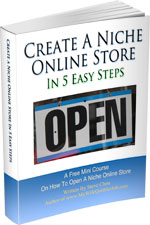
Ready To Get Serious About Starting An Online Business?
If you are really considering starting your own online business, then you have to check out my free mini course on How To Create A Niche Online Store In 5 Easy Steps.
In this 6 day mini course, I reveal the steps that my wife and I took to earn 100 thousand dollars in the span of just a year. Best of all, it's absolutely free!

